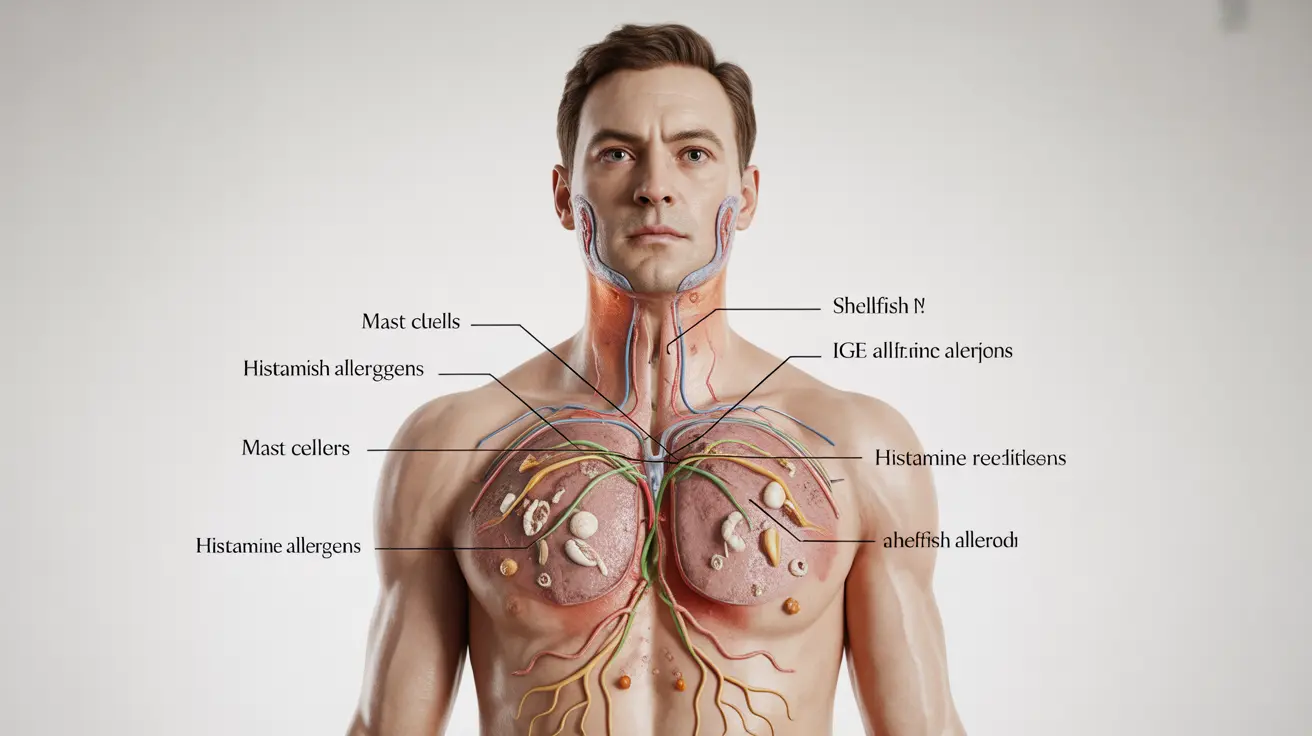Shellfish allergies represent one of the most common and persistent food allergies affecting adults and children worldwide. Unlike some childhood allergies that may fade over time, shellfish allergies typically develop during adulthood and tend to be lifelong conditions. Understanding the duration and severity of symptoms can help individuals better prepare for and manage potential reactions.
When someone with a shellfish allergy is exposed to trigger foods, the body's immune system responds by releasing histamine and other inflammatory compounds. This immune response creates a range of symptoms that can vary significantly in both intensity and duration, making it crucial for affected individuals to recognize warning signs and know when to seek medical attention.
Understanding Shellfish Allergy Symptom Duration
The duration of shellfish allergy symptoms typically ranges from several hours to a few days, depending on multiple factors including the severity of the reaction, the amount of shellfish consumed, and individual immune system sensitivity. Most mild to moderate reactions begin within minutes to two hours after exposure and generally resolve within 24 to 48 hours with appropriate treatment.
For individuals experiencing mild symptoms such as hives, stomach discomfort, or nasal congestion, these manifestations usually peak within the first few hours and gradually subside. However, some people may continue to experience lingering effects like fatigue or digestive upset for up to 72 hours after the initial exposure.
Severe reactions, including anaphylaxis, require immediate emergency medical intervention. While the acute phase of anaphylaxis may be controlled with epinephrine and emergency treatment, some individuals experience what's known as a biphasic reaction, where symptoms can return 4 to 12 hours after the initial episode, even without additional exposure to shellfish.
Recognizing Different Levels of Shellfish Allergy Symptoms
Mild Symptoms
Mild shellfish allergy reactions typically involve localized responses that, while uncomfortable, don't threaten overall health. These symptoms usually appear within 30 minutes to two hours after consuming shellfish and may include skin reactions like hives, itching, or eczema flare-ups. Digestive symptoms such as mild nausea, stomach cramps, or diarrhea are also common during mild reactions.
Respiratory symptoms during mild reactions might include a runny nose, sneezing, or mild throat irritation. These symptoms generally respond well to antihistamines and typically resolve within 6 to 24 hours with proper management.
Moderate Symptoms
Moderate shellfish allergy reactions involve more widespread symptoms that can significantly impact daily functioning. These reactions often include more extensive skin involvement, such as widespread hives or swelling of the face, lips, or tongue. Digestive symptoms may intensify to include persistent vomiting, severe abdominal pain, or prolonged diarrhea.
Respiratory symptoms during moderate reactions can include wheezing, persistent coughing, or difficulty breathing. These symptoms typically require medical attention and may take 24 to 48 hours to fully resolve with appropriate treatment including antihistamines, corticosteroids, or bronchodilators.
Severe Symptoms and Anaphylaxis
Severe shellfish allergy reactions constitute medical emergencies that can be life-threatening if not treated immediately. Anaphylaxis typically develops rapidly, often within minutes of exposure, and affects multiple body systems simultaneously. Cardiovascular symptoms may include rapid pulse, dizziness, fainting, or severe drop in blood pressure.
Severe respiratory symptoms include significant difficulty breathing, severe wheezing, or complete airway obstruction due to throat swelling. These reactions require immediate epinephrine administration and emergency medical care, as they can be fatal without prompt intervention.
When to Seek Emergency Medical Care
Recognizing when shellfish allergy symptoms require emergency medical attention can be lifesaving. Immediate emergency care is necessary when experiencing any signs of anaphylaxis, including difficulty breathing, severe swelling of the throat or tongue, rapid pulse, dizziness, or loss of consciousness. These symptoms can progress rapidly and become fatal within minutes.
Additionally, seek emergency care if multiple body systems are affected simultaneously, even if individual symptoms seem mild. For example, the combination of skin reactions, digestive symptoms, and respiratory issues together may indicate a severe reaction requiring immediate medical intervention.
Individuals prescribed epinephrine auto-injectors should use them immediately when experiencing severe symptoms and still seek emergency medical care afterward. The effects of epinephrine are temporary, and additional medical monitoring and treatment are often necessary to prevent secondary reactions.
Long-Term Outlook: Do People Outgrow Shellfish Allergies?
Unlike some childhood food allergies that may be outgrown, shellfish allergies typically persist throughout life. Research indicates that only a small percentage of individuals with shellfish allergies naturally outgrow their condition, with most people remaining allergic indefinitely. This persistence makes shellfish allergies particularly challenging to manage over the long term.
The reason shellfish allergies tend to be lifelong relates to how the immune system recognizes and responds to specific proteins found in shellfish. These proteins, primarily tropomyosin, remain consistent across different species of shellfish and are highly stable, meaning they don't break down easily during cooking or digestion.
Some individuals may notice that their sensitivity levels change over time, with reactions becoming either more or less severe. However, this doesn't indicate outgrowing the allergy, and exposure should still be strictly avoided regardless of perceived changes in sensitivity.
Effective Management and Prevention Strategies
The most effective strategy for managing shellfish allergies is complete avoidance of all shellfish and products containing shellfish proteins. This includes obvious sources like shrimp, lobster, crab, and oysters, as well as less obvious sources such as certain Asian sauces, seafood flavorings, and supplements containing glucosamine derived from shellfish shells.
Reading food labels carefully is essential, as shellfish proteins can appear in unexpected products. The Food Allergen Labeling and Consumer Protection Act requires manufacturers to clearly identify shellfish as an allergen, making label reading more straightforward for consumers.
For individuals with diagnosed shellfish allergies, carrying emergency medications is crucial. This typically includes antihistamines for mild reactions and epinephrine auto-injectors for severe reactions. Medical alert bracelets or necklaces can also help ensure proper treatment during emergencies when the individual cannot communicate.
Working with an allergist to develop a comprehensive action plan helps ensure appropriate response to different severity levels of reactions. Regular follow-up appointments can help monitor the condition and adjust management strategies as needed.
Frequently Asked Questions
How long do shellfish allergy symptoms usually last after exposure?
Shellfish allergy symptoms typically last between several hours to 2-3 days, depending on the severity of the reaction. Mild symptoms usually resolve within 6-24 hours with appropriate treatment, while moderate reactions may persist for 24-48 hours. Severe reactions require immediate medical attention and monitoring, as symptoms can be prolonged or return in a secondary phase.
What are the common mild, moderate, and severe symptoms of a shellfish allergy?
Mild symptoms include localized hives, itching, mild nausea, or runny nose. Moderate symptoms involve widespread skin reactions, significant digestive upset, or breathing difficulties like wheezing. Severe symptoms constitute anaphylaxis and include difficulty breathing, severe throat swelling, rapid pulse, dizziness, loss of consciousness, and severe drop in blood pressure affecting multiple body systems simultaneously.
When should someone with a shellfish allergy seek emergency medical care?
Seek emergency medical care immediately for any signs of anaphylaxis, including difficulty breathing, severe throat or tongue swelling, rapid pulse, dizziness, or loss of consciousness. Also seek emergency care when multiple body systems are affected simultaneously, even if individual symptoms seem mild, or if prescribed epinephrine has been used, as additional medical monitoring is essential.
Can people outgrow a shellfish allergy or does it typically last for life?
Shellfish allergies typically persist for life, with only a very small percentage of people naturally outgrowing this condition. Unlike some childhood food allergies, shellfish allergies usually develop in adulthood and remain permanent due to the stable protein structures that trigger immune responses. Complete avoidance remains necessary throughout life regardless of perceived changes in sensitivity.
How can I manage or prevent shellfish allergy reactions, including treatment options?
Prevention involves strict avoidance of all shellfish and shellfish-containing products, careful label reading, and awareness of cross-contamination risks. Management includes carrying antihistamines for mild reactions and epinephrine auto-injectors for severe reactions. Working with an allergist to develop a comprehensive action plan, wearing medical alert identification, and educating family and friends about emergency response are essential management strategies.




